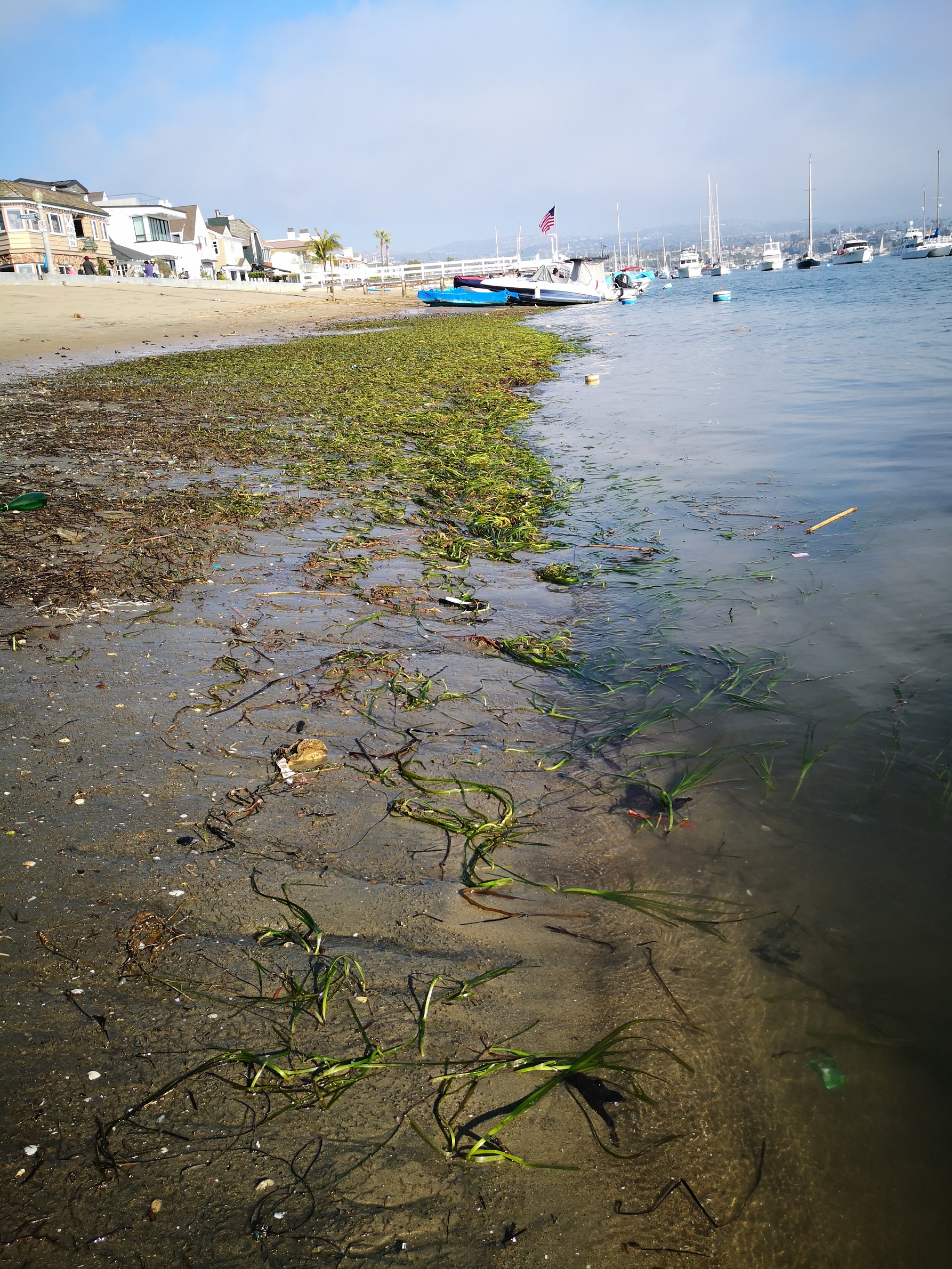Three-tiered framework developed for assessing health of seagrass beds

SCCWRP has developed a three-tiered framework incorporating bioassessment methods to help environmental managers across coastal California comprehensively evaluate the health of eelgrass and other types of submerged aquatic vegetation (SAV).
The SAV assessment framework, described in a SCCWRP technical report published in August, represents an important step forward in efforts to better protect and restore this ecologically significant habitat, including within California’s estuarine Marine Protected Areas (MPAs).
Seagrass beds – which are scattered across shallow coastal areas with soft-bottom sediments – provide critical habitat for organisms such as fish, crabs, lobsters and turtles. Because of their ecological significance, SAV condition assessments also can shed important insights into overall coastal water quality and ecological integrity.
Traditionally, SAV monitoring in California has been focused primarily around documenting the locations and extent of eelgrass, which is the dominant type of seagrass found in California’s coastal embayments. Although these insights have helped inform protection and restoration efforts, this type of monitoring does not directly help managers understand if coastal areas containing SAV are achieving designated beneficial uses.
The SAV assessment framework was developed over a three-year period in consultation with a technical advisory committee.
The three tiers of the framework encompass:
» measurements of SAV’s presence and extent
» assessments of overall water body condition based on SAV health
» assessments of overall ecological functioning based on SAV health
During the framework’s development, eight seagrass beds were surveyed in Newport Bay and San Diego Bay. Researchers found that their condition declined along a predictable stressor gradient in response to increasing environmental stressors.
SCCWRP’s SAV assessment framework is designed to be used with all types of seagrass, although it was calibrated initially using eelgrass in Southern California. Researchers will continue to pilot-test the SAV framework in more seagrass beds across California over the next three years.
Eventually, the new framework could be adopted and incorporated into routine seagrass monitoring programs, including California’s estuarine MPA program.
For more information, contact Dr. David Gillett.
More news related to: Bioassessment, Top News